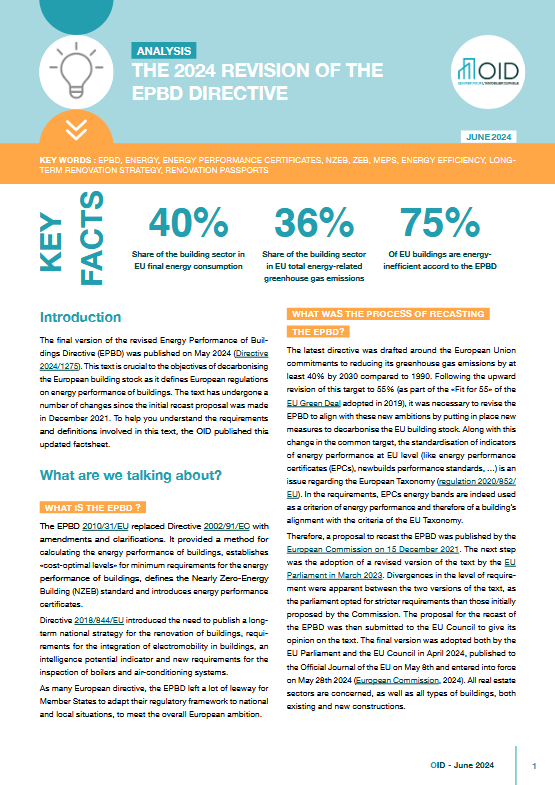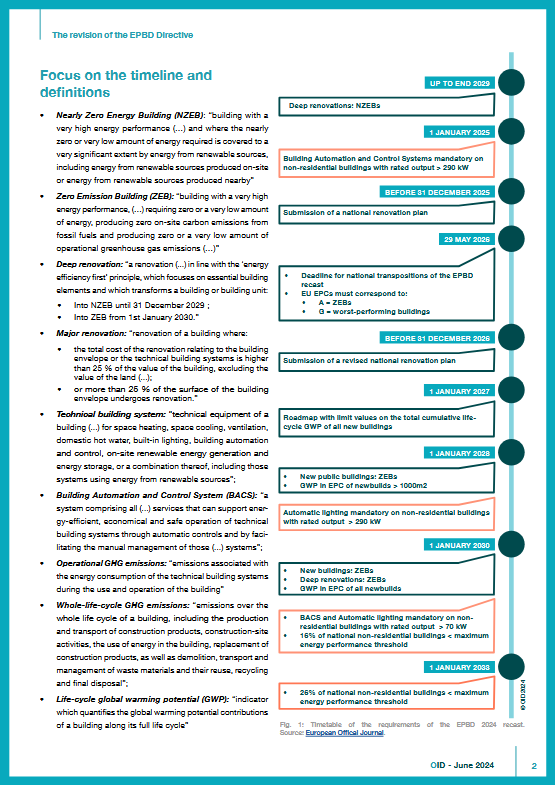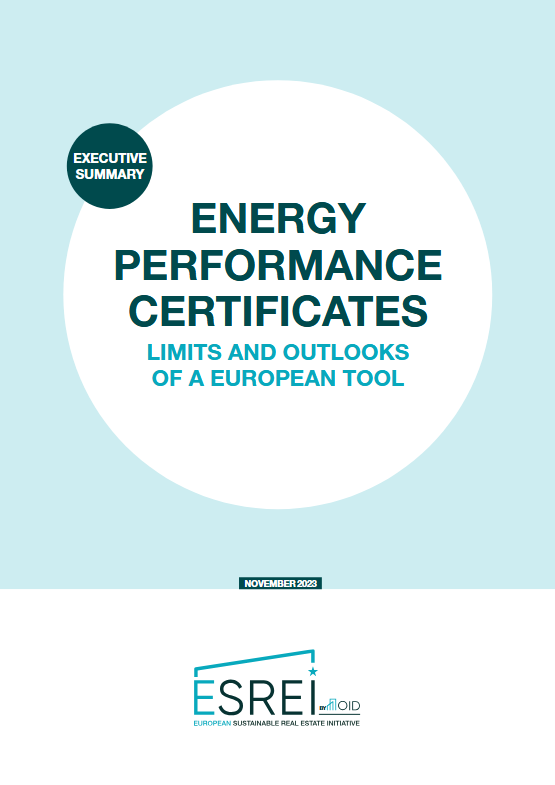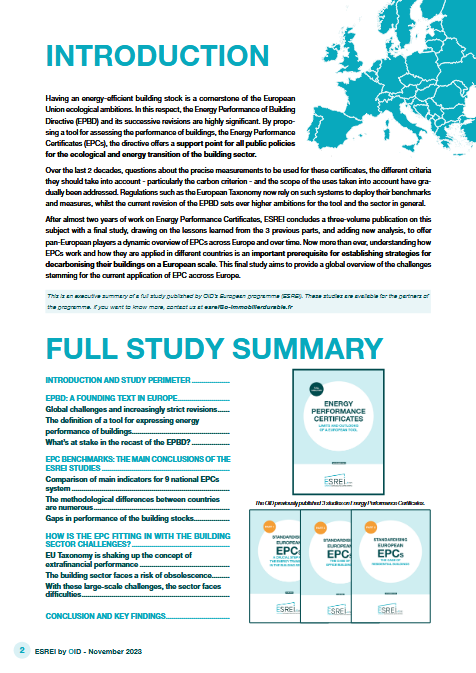On June 30th the European Commission published a package of documents to provide support to EU countries in implementing the Energy Performance of Buildings Directive (EPBD). This package is composed of a delegated regulation, an implementing regulation and a comprehensive set of guidance documents, which contain decisive information as EU countries are set to transpose the latest version of the directive into national law by May 2026.
Key takeaways
- EU Building Stock Observatory ESG database is building up, for the moment focusing on energy and carbon aspects,
- New methodology is set to update minimum energy performance levels in EU countries by 2030 for new buildings and major renovations,
- New and partially harmonized EPC scale are coming up in May 2026 with deeper definition of A and G classes,
- Clear definition of solar energy potential optimization was released and should integrate some permits delivery in 2026.
Reminder – EPBD Recast
The Energy Performance of Buildings Directive (EPBD) is the legislative cornerstone of the building sector’s decarbonization at EU scale. As the EU ambitions regarding carbon emissions rose with the Fit for 55 package – targeting a 55% emissions reduction by 2030 – it became urgent to update this directive. The building sector indeed represents 40% of EU final energy consumption. To activate this significant leverage on our GHG emissions the EPBD was recast in 2024.
To know more about it read our dedicated factsheet.
An EU cross-country building database
Primary responsibility for implementing EU law lies with EU countries. However, in areas where uniform conditions for implementation are needed, the Commission adopts an implementing act. This is what happened regarding the construction of the environmental dataset for the EU Building Stock Observatory.
At a time when real estate actors are no longer restrained to their national perimeter and with the emergence of legislative expectations which lie at European level regarding building environmental performance, such as the Taxonomy, it became essential to get access to a centralized database at EU level on the matter. This is the ambition of the EU Building Stock Observatory.
New energy performance standards for construction and major renovation?
Second element of the package, the Commission published a delegated act updating the methodology for the calculation of cost-optimal levels of energy performance. According to the recast of the EPBD, the Commission had until the 30th of June to update said methodology and did it on the gong.
These cost optimal levels of energy performance apply to new buildings and major renovation, and are used to benchmark the minimum energy performance set by the member states in their national legislation. The idea is to find, for different categories or sub-categories of buildings, the level of ambition on energy aspects that brings the largest economical upside (cf. fig. n°1). Since their introduction, they are regularly updated to follow the evolution of the sector and keep rising ambitions regarding the decarbonization of the European building stock.
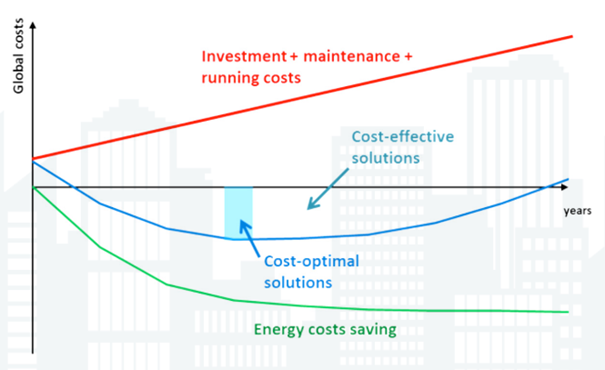
Fig. n°1: Relationship between cost-optimality and cost-effectiveness (Source : BPIE, 2013)
This time the new methodology now enables calculation not only of the energy performance, but also the emission performance of buildings and building elements, and includes new parameters such as:
- outdoor climate conditions and their future changes according to including heat and cold waves,
- environmental and health externalities of energy use,
- waste management costs (before ‘disposal’ costs), where applicable,
- technological developments.
It shall apply from 1 January 2026, and the national calculations are to be reported to the Commission by 30 June 2028. If a minimum energy performance requirement in force is less energy-efficient than the calculated cost-optimal levels of minimum energy performance requirements (i.e. by more than 15%), the concerned Member State will be required to adjust it within 24 months.
The Guidelines: European detailed roadmap
In addition to these two acts, the Commission issued guidelines on 13 specific points of the EPBD recast. Here is a quick overview of the main ones.
EPC – Partial harmonization at EU scale
▪ Link to dedicated guidelines.
The EPBD recast introduced a common A to G scale for all European EPCs and the dedicated guidelines detail the definition of “A” and “G” classes, respectively as the class for zero-emission buildings, and the one corresponding to the very worst-performing buildings in the national building stock at the time when the scale was introduced.
Countries using A0 classes to design zero-emission buildings are allowed to keep this designation, and an extensive definition of class A+ is introduced if some countries wish to maintain it in their national EPC scale.
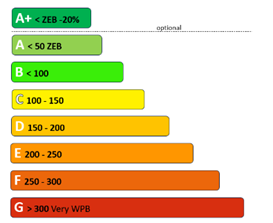
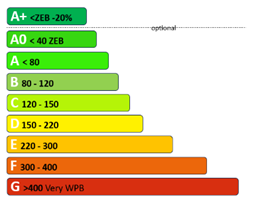
Fig. n°2: Example of a varying bandwidth energy performance classes with and without the optional ‘A0’ class (primary energy use in kWh/m2 per year) (Source: European Commission, 2025)
Member states will have to align on these new expectations by 29 May 2026. This effort of harmonization represents a considerable step towards a clearer and simpler way to classify buildings in each country and across the EU, given the current EU EPC landscape (cf. fig. n°3).
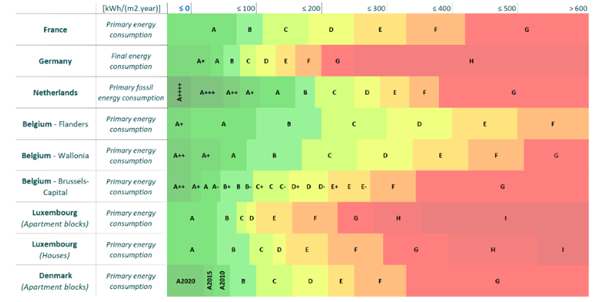
Fig. n°3: Energy bands and their thresholds in several Member States that employ measurement scales in kWh/m²�year for residential buildings among the sample of European countries. (Source: ESREI, 2023).
To know more about it read our dedicated study.
Renovation passports – a standard roadmap
▪ Link to dedicated guidelines.
These passports are defined as “a tailored roadmap for the deep renovation of a specific building in a maximum number of steps that will significantly improve its energy performance” in the EPBD recast. They should target major renovations and aim for NZEB levels before 2030 and ZEB after that date.
Optimizing solar energy potential
▪ Link to dedicated guidelines.
In line with the REPowerEU plan, launched in 2021 to improve EU’s energy independence, the EPBD cast pushes for an extensive deployment of renewable energies in buildings, and especially solar energy as it expects Member States to “ensure that all new buildings are designed to optimise their solar energy generation potential”. This should be integrated into the permit granting procedure, according to the following timeline (cf. tab. n°1).
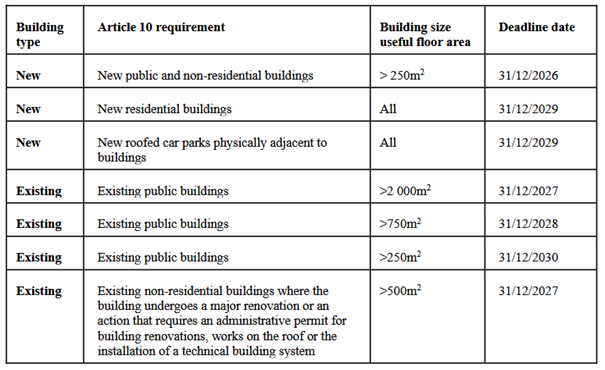
Tab. n°1: Timeline for deployment of solar installations (Source: European Commission, 2025)
Speeding up sustainable mobility
▪ Link to dedicated guidelines.
A shortage of recharging points in private buildings can be a barrier to the take-up of electric vehicles in the EU. The EPBD aims at accelerating the deployment of recharging infrastructure in or adjacent to buildings to avoid that pitfall.
The guidelines first remind the obligations regarding this aspect of the EPBD (cf. tab. n°2), before extending definitions and clarification specific challenges.
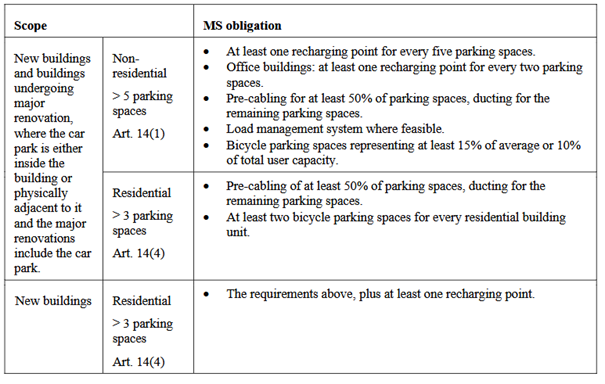
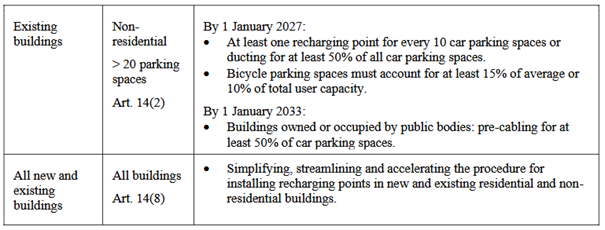
Tab. n°2: Summary of obligations regarding sustainable mobility (Source: European Commission, 2025)
The guidelines also provide detailed elements on cornerstone standards which should shape the post-2030 sustainable real estate landscape, such as the zero-emission building (ZEB) standard, or the global warming potential (GWP) indicator which should be set by 2030 by EU countries. Additionally, it gives clarifying insights on phasing out of the fossil fuel boilers systems by 2040.
This article provides a short recap of the extensive, yet decisive content released by the European Commission on 30 June 2025. The European Sustainable Real Estate Initiative – ESREI keeps an active monitoring of EU regulatory framework as we believe it is now essential for the sector to access information at this scale. If you are interested in the programme, do not hesitate to contact us: esrei@o-immmobilierdurable.fr

